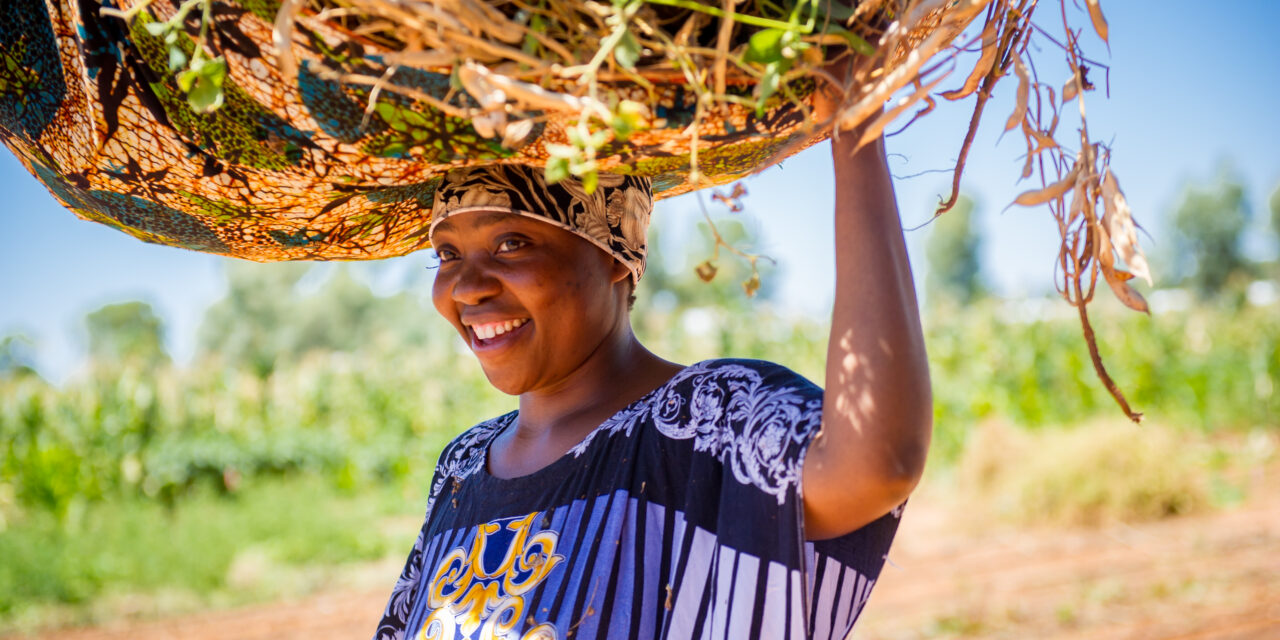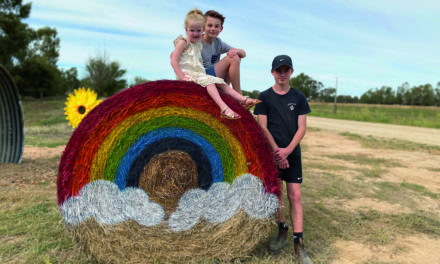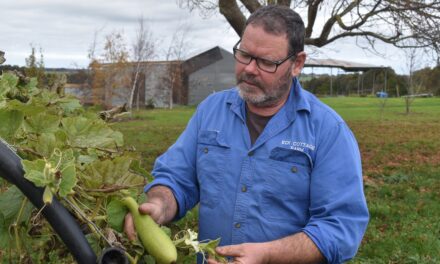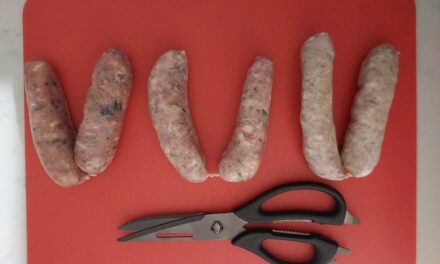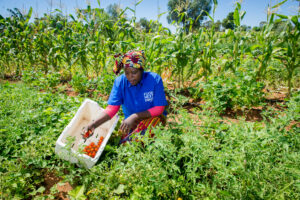
Coming from some of Africa’s most troubled hotspots, Mildura’s newest farming community is creating a new taste for the locals while retaining links with the homes they have left behind for what they hope will be a better, long-term future in Australia, writes ANDREW MOLE.
The Burundian, her face lit by a warm smile and resplendent in traditional dress, is serenely walking through a flourishing garden, a huge load of freshly harvested produce piled high on her head.
And she is just minutes from Mildura’s CBD.
On two hectares that could be straight out of Africa.
It’s where others from Burundi work alongside people from the Democratic Republic of Congo, Rwanda or Zimbabwe.
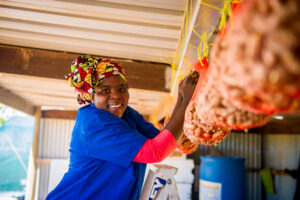
All sharing a common bond beyond their continent of origin — all of them were migrants.
Now they are locals — Australians, or on their way to becoming Australians — and working together with their individual plots across their tiny farm for the chance to put food with which they are familiar on their tables, as well as its ongoing social and cultural benefits.
Right now there are 29 of them tending the plots, all part of the Food Next Door initiative, established with the goal, according to its founders, of “relieving the suffering or distress suffered by newly arrived migrants and refugee groups, particularly those without access to land and living in rural and regional areas”.
“We’re working hard to solve this issue by supporting these groups to re-engage in farming and grow food, including their traditional foods.”
Food Next Door’s vision is for underutilised and vacant farmland to be transformed into productive food-scapes using regenerative farming practices.
One of its pilot projects is the community demonstration farm, but if you didn’t see it with your own eyes, you might have trouble believing it.
Joselyne Majambere reached Mildura after fleeing Burundi’s brutal ethnic violence in 1993, via neighbouring Tanzania, reaching Australia in the winter of 2005.
Today some of the harder decisions Joselyne makes revolve around managing all water supplies to the irrigated acreage and compost as required, as well as seed for crops and storage of surplus seed for future use.
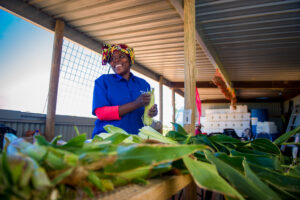
Oh, yes, and if there are any hiccups, such as broken pipes, the first word every one of the mini farmers learn when they arrive is “Joselyne!”
She has been with the project since its inception, and it began with something as simple as a crop of maize.
But it was a first step, which not only engaged the Africans with their new home and its community, but also provided researchers with a window into a new world within Australia.
University of Melbourne ’s Alana Schetzer says armed with shovels, hoes and some seeds, Mildura’s Twitezimbere Burundian planted the maize — a traditional staple food in their home country — and as well as locals, connected researchers to new agricultural methods.
Methods helping researchers from the universities of Melbourne and Wollongong understand new ways to grow and support crops beyond current techniques.
Alana said Dr Olivia Dun, from the School of Geography at the University of Melbourne, and fellow researchers Professor Lesley Head from the University of Melbourne and Dr Natascha Klocker from the University of Wollongong, have been able to gain important insights into different agricultural methods and crops that could be adopted in Australia.
“The researchers are exploring how people from ethnically diverse backgrounds value nature, how they practise agriculture and how they transfer skills from their home country to the Australian landscape,” Alana said.
Drawing on this untapped resource has also provided the Burundian community multiple benefits — it not only provided it with the main ingredient for their traditional dishes, but it also enabled them to connect with the broader Mildura community.
Joselyne says she sees Mildura as a “place to grow”.
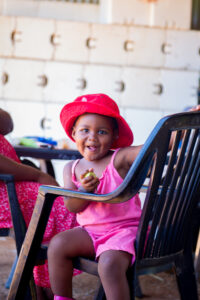
And grow it has. Those first tiny maize seeds were planted in September 2016 and by February 2017 had flourished into a soaring crop in which people could get lost.
Olivia says its success has delighted everyone involved, but especially the local Burundians.
Maize is a staple food for Burundians, along with sweet potato, cassava and wheat.
“Joselyne and other members of the Burundian community are extremely accomplished and knowledgeable farmers,” Olivia says.
“Through their interactions with more established farmers in Mildura, this project provides really exciting opportunities to learn about their farming methods.”
The community consumes some of the maize fresh, but most is either sold or dried and milled into flour to make ugali — a traditional East African dish.
Initial attempts to grow food before the Mildura experiment were not quite so successful, Joselyne recalls.
“Before we reached Mildura we were in a city, and after talks with TAFE we had somewhere to grow but it was sad because we had to leave most of it there although we had a patch on which we could grow food, it was two hours away — each way,” she says.
“In 2015 the University of Melbourne got involved, and in 2016 we had a 2ha trial up and running, in which the plan was to grow what we wanted, the way we wanted and then to see if we could make it a sustainable project.
“There were 22 of us then, growing together, and people were amazed at what we were able to produce form the land we had.”
With land — and water — the keys to the project’s future, the group faced the need for more money, deciding to go down the co-op path and form Food Next Door.
And Joselyne says it has been growing ever since, with a workforce that, at times, has ranged from six-year-olds to 99-year-olds — with an annual highlight, the harvest ceremony, recently staged on February 2.
She says the new farm location is not isolated, and whatever is grown there can be cooked and stored for future use as well as on tables as freshly picked.
“Production is going up, and while much of the work is still hands-on, the co-op has invested in a walk-behind mower and digger.
“We are fully irrigated, using both drip and overhead sprinklers, and buy-in cow compost to help fertilise the plots, along with their own green manure.”
And like most farms across north-west Victoria, Food Next Door has also endured an incredibly wet year, causing the first fungus outbreak in the little enterprise’s history, which Joselyne says they have been treating with ash.
As a core supplier to local food initiative Out of the Box, Food Next Door juggles that weekly commitment with providing food to its member families — and their friends — as well as a small amount of wholesaling or the retail sector.
Research shows around 25 per cent of farmland in the Mildura region is unused or underused.
So the Food Next Door initiative’s goal as to relieve the suffering or distress experienced by newly arrived migrants and refugee groups, particularly those without access to land and living in rural and regional areas.
People who have been removed from the life they knew.
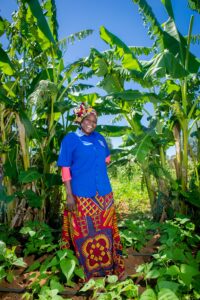
Josylene says by supporting these groups to re-engage in small-scale farming and grow food, including their traditional foods, has been such a positive step forward.
“Australia’s land and the way we farm is different to what they are used to.
“So, we train the farmers in managing our soil, Australian seasons, water allocations and farming techniques, and try to improve the soil without the use of chemicals.
“By engaging people from diverse backgrounds such as ours, to grow and share the food we love, we are able to introduce and supply new ingredients to local Mildura households.
“The farmer and the community can be self-sufficient, growing clean, fresh produce on small farms, helping to secure the local food cycle.”
The Murray-Darling Basin Authority’s Mildura regional manager, Dr Andrew Kremor, says it’s important, as part of welcoming people from all walks of life into our river communities, that they have opportunities to understand the wider significance of their part of the Murray-Darling Basin.
“The Food Next Door Co-op and the Mildura community has certainly achieved this,” he says.
“Assisting refugee and migrant farmers to grow culturally appropriate food using sustainable methods is fantastic for our river system’s health.
“Water is the lifeblood of our regional communities. The MDBA wants everyone to understand we all rely on a healthy river system for drinking water, food production, tourism and cultural practices.
“Thanks to organisations like the Food Next Door Co-op, this message is also reaching new residents.”
Water scarcity and market complexities often meant buying water to grow crops was financially out of reach. To assist, the Food Next Door Co-op started another initiative — the Mildura Community Water Bank (MCWB).
Through donated water and money, the MCWB has developed a portfolio of water rights to assist locally active sustainable farming for food consumption and a healthy river system.
The MCWB is the only community water bank of its kind in the country. Water holders can donate temporary or permanent water allocations, which are added to the allocation bank account, and small-scale farmers can then apply for the allocations at a fair price.
MCWB gratefully receives some regular water allocation donations at the start of the financial year from local landholders. Money donated can also be used to purchase allocations, which are then added to the allocation bank account.
“We have had some wonderful initiatives from the community to raise money for MCWB to purchase a megalitre of permanent water, worth around $900,” Joselyne says.
“And a local farmer saw the ongoing benefits of small-scale regenerative farming to the community, identified a spare megalitre of their permanent water allocations and transferred the ownership to MCWB.
“This has set us up to succeed in the long-term — we are eternally grateful to that farmer.”
Food Next Door went through 12 megalitres of water last year, so has launched a campaign to attract more water allocations, especially permanent water.
Once again engaged in farming in their new community, the migrant and refugee farmers are encouraged to help each other through a support network.
This way they can get together, visit each other’s farms and exchange ideas.
Most importantly, they become part of their adopted community and share the food they love to eat and grow.

